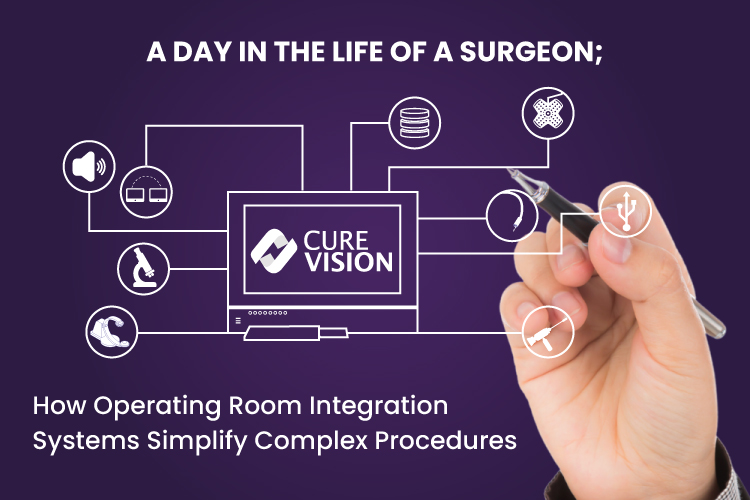A Day in the Life of a Surgeon- How Operating Room Integration Systems Simplify Complex Procedures

The operating room is often called the "heart" of any hospital, and for good reason. It's where life-saving procedures are performed, medical mysteries are unravelled, and the skills of surgeons and their teams are tested. Every second counts in this fast-paced, high-stakes environment, and precision is paramount. To navigate the complexities of modern surgery, surgeons rely on cutting-edge technology, and one crucial tool in their arms is the operating room integration system. In this blog, we'll take a journey through a day in the life of a surgeon and explore how these systems simplify complex procedures.
The Morning Routine: Preparation is Key
A surgeon's day typically starts early, often before sunrise. The first order of business is a comprehensive review of the day's schedule, which includes patient information, procedure details, and any special requirements. This review helps the surgeon mentally prepare for what lies ahead and ensures that the operating room has the necessary resources.
The operating room integration system plays a pivotal role in this phase. These systems consolidate patient records, surgical plans, and imaging data into a single interface, providing surgeons with a comprehensive case overview. Having this information readily accessible allows surgeons to plan their approach with precision, reducing the margin for error.
Entering the Operating Room: A Symphony of Technology
As the surgeon enters the operating room, a symphony of technology greets them. The integration system is the conductor, coordinating the various components used during the procedure. This includes medical imaging devices like CT and MRI scanners, endoscopy systems, surgical robots, and more.
One of the standout features of these integration systems is their ability to display real-time imaging data on high-definition monitors seamlessly. This allows the surgeon to navigate complex anatomical structures more accurately during surgery. For instance, in neurosurgery, the integration system can overlay preoperative MRI images onto the surgical field, guiding the surgeon's every move. This augmented reality-like experience enhances precision and reduces the risk of damage to critical structures.
Communication and Collaboration: A Team Effort
Surgery is rarely a one-person show. Surgeons work closely with a team of nurses, anesthesiologists, and other specialists to ensure the best possible outcome for the patient. Effective communication and collaboration are vital; operating room integration systems facilitate these processes.
Integrated communication tools within these systems allow team members to share information, images, and updates in real-time. Surgeons can discuss the procedure's progress with colleagues outside the operating room, consulting specialists and seeking guidance when needed. This level of connectivity and collaboration ensures that everyone is on the same page and that decisions are made swiftly, improving patient care.
Enhanced Safety and Precision: The Digital Advantage
Surgery, by its nature, involves a certain degree of risk. However, technology has dramatically improved safety and precision in the operating room. Integration systems have a range of features designed to mitigate risks and enhance outcomes.
One such feature is the integration of patient monitoring systems. These systems continuously track vital signs and other critical parameters, alerting the surgical team to deviations from the norm. This early warning system can be a lifesaver, allowing immediate intervention if a patient's condition deteriorates during surgery.
Additionally, integration systems often include video recording capabilities. This is not just for documentation but also for educational purposes. Surgeons can review procedures to analyze their techniques, improve, and share educational content with medical students and fellow professionals.
Streamlined Documentation: Reducing Administrative Burden
Surgeons are not immune to the paperwork and documentation of modern healthcare. After a procedure, accurate and timely documentation is essential for patient records, billing, and legal purposes. Operating room integration systems simplify this often unmanageable task.
These systems automatically capture and store data from the surgical procedure, including images, video recordings, and patient monitoring data. This reduces the administrative burden on surgeons and their teams, allowing them to focus more on patient care and less on paperwork. Additionally, electronic records are easier to access and share, improving overall efficiency in healthcare delivery.
The End of the Day: Reflection and Relief
As the day draws to a close, the surgeon takes a moment to reflect on the challenges and successes of the day. Operating room integration systems have played an integral role in making these successes possible, simplifying complex procedures, improving communication, enhancing safety, and streamlining documentation.
The operating room integration systems have become indispensable tools in the dynamic world of surgery, where split-second decisions can make all the difference. They empower surgeons to provide the highest level of care, reduce risks, and achieve better patient outcomes.
In conclusion, a day in the life of a surgeon is a journey through the complexities of modern healthcare, where technology and expertise combine to save lives. Operating room integration systems are the unacknowledged heroes of the operating room, simplifying complex procedures and ensuring that every surgical team has the tools to excel. As technology advances, we can expect even more significant innovations in the field of surgery, further improving patient care and pushing the boundaries of what is possible in the operating room.
At CureVision, we're shaping the future of surgery through innovation and technology, empowering surgeons for success in the operating room.


